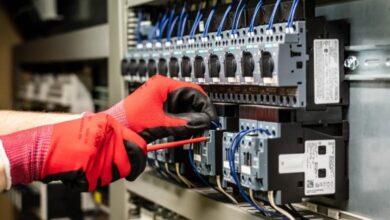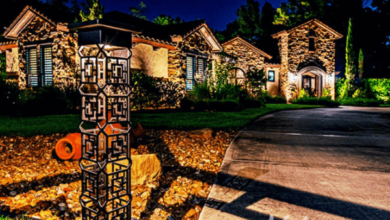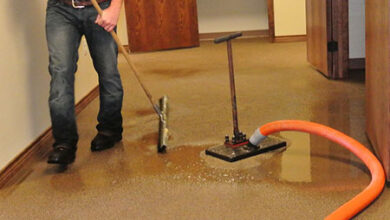Can You Install an Alarm System Yourself? DIY vs. Professional Guide

Can You Install an Alarm System Yourself?
Home alarm systems are crucial for safeguarding your home and providing peace of mind. However, installing them can sometimes be a complicated task, prompting many to question whether they should take a DIY approach or rely on professional help. In recent years, advancements in security technology have made DIY alarm systems easier to install, but knowing when it’s best to go DIY versus professional is essential to ensure safety and functionality. This guide will explore DIY and professional home alarm systems installations, outlining the pros and cons, essential steps, and safety tips to help you choose the best option for your home.
DIY Alarm System Installation: What You Need to Know
Installing an alarm system on your own can be both rewarding and practical. Many DIY options come with clear instructions. DIY systems are typically wireless, allowing you to place sensors and cameras where needed without having to worry about intricate wiring. However, installing an alarm system yourself requires a basic understanding of the device components and where to place them for optimal security. For example, positioning cameras at entry points, mounting motion detectors in high-traffic areas, and setting up a control panel for easy access are all vital for an effective DIY setup. In this regard, high-quality systems like the eufy HomeBase S380 are well-regarded among users for offering straightforward setup and strong security features, helping homeowners feel more confident in handling the installation themselves.
Pros and Cons of DIY vs. Professional Installation
Deciding between DIY and professional installation depends on factors like your budget, home layout, and comfort level with technology. Let’s look at the specific benefits and drawbacks of each option.

Advantages of DIY Alarm Systems
One of the most appealing aspects of DIY alarm systems is the control and customization they offer. Installing a DIY alarm system allows you to decide the positioning of each component and adjust your setup as needed without waiting for a professional. DIY systems are also typically more budget-friendly, as they eliminate installation fees. For homeowners with flexible schedules and a willingness to follow setup guides, DIY systems offer convenience and adaptability. Many brands today provide systems that are plug-and-play, allowing users to install sensors, cameras, and control panels with minimal hassle. Products like the eufy HomeBase S380, for example, come equipped with features such as high-resolution video storage, local data encryption (AES-128 + RSA-1024), and BionicMind™ AI for intelligent detection, making them ideal choices for those looking to install and manage security independently.
Benefits of Professional Installation for Security
While DIY setups are appealing, professional installations offer significant advantages, especially for those with larger or multi-story homes. Professional installers have the expertise to assess your property’s layout, identify potential blind spots, and place sensors and cameras to cover every vulnerable area. Another major benefit of professional installation is the peace of mind it brings. Security experts know how to integrate alarm systems seamlessly, often including hardwired components that offer consistent connectivity and reliability. This option is particularly beneficial if you need specialized equipment or if your home has complex security needs, like advanced monitoring or 24/7 video recording.
Steps to Install an Alarm System Yourself
When opting for DIY installation, following a step-by-step approach ensures that each component is properly set up and functioning. Here are the key steps to take.
Preparing and Placing Sensors, Cameras, and Control Panels
The first step in setting up your alarm system is planning where each component will be placed. Entry points such as doors and windows are obvious locations for door sensors, while main living areas or hallways are ideal for motion detectors. Cameras should be positioned at entryways or other vulnerable spots to capture a broad view of any movement. Before mounting, use double-sided tape or temporary mounting strips to test each component’s placement. This allows you to adjust the angles and coverage if needed. Once you’re satisfied with the placement, secure the components firmly to walls or other surfaces as instructed by the manufacturer. For centralized control, the main panel or base station should be placed in a secure yet accessible location. Devices like the eufy HomeBase S380 centralize video feeds and notifications, allowing you to view alerts and footage directly from your smartphone, ensuring your system is connected and secure.
Testing and Troubleshooting Your Alarm Setup
Once all components are in place, it’s time to test the system to make sure everything is functioning as expected. Many alarm systems have built-in testing modes, allowing you to simulate triggers for each sensor and camera. Run a thorough check by opening doors and windows, walking through rooms with motion detectors, and checking that video feeds are clear. If any sensors fail to respond or cameras show interference, consult the troubleshooting section of your system’s manual or check the mobile app for guidance. In some cases, adjusting the distance or angle of sensors can solve issues with detection. Ensuring every component works properly before relying on the system is critical to maintaining your home’s security.
Safety Tips and Common Mistakes to Avoid
A DIY alarm system can effectively protect your home, but following essential safety tips and avoiding common mistakes is key. First, ensure a steady power source—check and replace batteries regularly or consider systems with solar or rechargeable options. Keep your Wi-Fi connection strong, as most DIY systems depend on it for remote alerts; a Wi-Fi extender can help if coverage is weak. Position cameras and sensors carefully, avoiding direct sunlight and ensuring motion detectors cover likely entry points. Secure the system with strong passwords and, if possible, enable two-factor authentication—systems like the eufy HomeBase S380 offer robust encryption for added safety. Lastly, regularly update the system’s software to fix bugs and enhance security features, ensuring your alarm system remains reliable.
Conclusion
Deciding whether to install an alarm system yourself or to rely on a professional largely depends on your confidence in handling technology and your specific security needs. DIY systems provide flexibility, cost savings, and convenience for those comfortable with basic setup tasks. In contrast, professional installations are beneficial for larger homes or homeowners seeking expert placement and advanced security features. Whichever route you choose, ensuring a reliable setup is key to maintaining the safety and security of your home. With the right system and setup approach, you can confidently protect your property and loved ones from potential threats.





